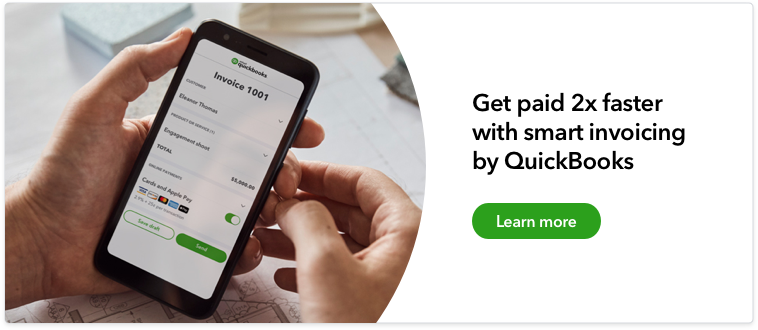

When you’re providing professional services like consulting or a law firm completing contracted work, it can be challenging to ensure the pay for your work is fair. A retainer agreement is a tool that helps you establish terms for the services you’ll provide and payment for those services. Having retainer agreements in place with your clients can improve your income security and workload consistency.
As a business owner, of course you want those things, but implementing new measures can be complicated. With this guide, you can set up your own retainer agreements and achieve greater stability for your business. Use the links below to jump to a specific section, or read this post from start to finish for everything you need to know.
A retainer agreement is a contract that sets terms for how much time a service provider will reserve to work for a client each month. It also details how much the client pays for that work. With a retainer agreement, you’re agreeing to a specific workload and the client is agreeing to pay for that work.
Retainer agreements might sound like any ordinary contract at first glance. However, they’re different because retainer agreements center on the give-and-take of your relationship. Retainer agreements go beyond a work arrangement and establish a monthly commitment for time you set aside to work for a particular client. On the client’s end of the agreement, they’re committing to a flat fee for the amount of hours “retained” in their service each month.
These terms are established by deciding on the:
Generally, payment is issued before work starts—for instance, at the beginning of the month. In other cases, you may agree to an upfront retainer fee and the rest as a lump-sum payment after delivery. A retainer fee is virtually the same thing as a deposit. How you choose to handle your retainer agreement is up to you—just make sure you’re comfortable with the terms you propose.
Additionally, having contingency measures for additional work outside of the agreed-upon scope or hours will help you both uphold your end of the agreement. On the other hand, if they don’t have enough work for you that month to fill the retained hours, you still receive full payment.
Retainer agreements are typically the most useful for services that are provided on a per-project or hourly rate basis, such as law firms or paralegals. Some industries that commonly use retainer agreements include:
Of course, retainer agreements aren’t exclusive to providers in these industries. If you believe that a retainer agreement would be useful for the type of services you provide, it could be worth trying out. Start with one or two clients to see whether the arrangement suits your situation.
It may seem that using retainer agreements is an extra step in the workflow process, adding complexity that might even scare off some clients. However, there are many benefits to using retainer agreements—both for your business and your clients.
Some of the benefits you can look forward to if you decide to use retainer agreements include:
Your clients can also benefit from this arrangement in several ways:
In essence, all retainer agreements are the same—an agreed-upon exchange of services and payment for a monthly obligation. However, above and beyond that, there are different ways to set them up based on your services and preferences. There are several types of retainer agreements—we’ll give you a brief introduction to the options:
1.Retainers based on work in exchange for pay, which will likely apply to most situations.
2.Retainers based on work in exchange for access, which is often used by consultants like lawyers. In these cases, a retainer is paid for the reassurance that if the client needs your help, you’ll be available to them.
As you can see, there is flexibility in how you set up your retainer agreement, which means it can work for almost any service-oriented business.
When you’re getting familiar with how retainer agreements work, you’re going to take it slow. Choose a few important clients to extend the option to so you can test how this new approach works for you. Monthly retainers are a useful tool in client retention, which is another reason you want to focus on your key clients first.
When it comes to reaching out to your clients about switching to a retainer agreement, you want to be strategic about it. Mainly, you want the proposal to look professional , answer questions they might have about the arrangement, and sell them on the benefits.
While you can establish a process and even a template for your retainer agreement proposals, you want to make sure it’s tailored to the client. After all, you’re trying to sell them on this arrangement and how it can work in their best interests.
What should be included in a retainer agreement? Start with these key aspects:
Before you show it to the client, make sure you’ve double-checked for any errors and thought through all the terms. You want to make sure your retainment agreement is something you can realistically manage and financially benefit from.
Once you’ve created a well-defined retainment proposal, it’s time to have the client review it.
Clients may want to negotiate specifics before agreeing to a retainer, and doing so can help you reach an agreement that suits both parties. You might have to revise the agreement to come to terms you’re both happy with. Just make sure you maintain fair terms and compensation when negotiating your retainer contract.
Once everything is agreed upon, make sure the client signs it. Provide them with a copy and keep a copy on file for yourself in case there’s any confusion or disagreements in the future.

Use QuickBooks Payments to easily create and send invoices to your clients to help ensure your retainer agreement is met each month. With QuickBooks Payments, you will also be able to accept payments from your clients—they can even pay directly through the invoice . Once they pay, the transaction will be categorized and recorded for you, streamlining the entire process. And, if your client fails to pay on time , you can send payment reminders—but hopefully, that won’t happen with your new agreement.
Retainer agreements are an excellent way for businesses and freelancers to create loyal clients and consistent business income. If you think retainer agreements will work for the services you provide, try implementing them sooner rather than later. With retainers in place, you’ll be able to focus more time on your core business and less time chasing leads and new customers. And with QuickBooks Payments in your business toolkit, it’s that much easier to implement and maintain retainer agreements with little effort on your end.
Recommended for you
What is a recurring payment? Tips, types, and info to simplify billing
October 20, 2021

Flat rate vs. hourly billing: Which is better?

Arrears billing and payments: What does it mean to be “paid in arrears”?
We provide third-party links as a convenience and for informational purposes only. Intuit does not endorse or approve these products and services, or the opinions of these corporations or organizations or individuals. Intuit accepts no responsibility for the accuracy, legality, or content on these sites.
**Product information
QuickBooks Live Assisted Bookkeeping: This is a monthly subscription service offering ongoing guidance on how to manage your books that you maintain full ownership and control. When you request a session with a Live Bookkeeper, they can provide guidance on topics including: bookkeeping automation, categorization, financial reports and dashboards, reconciliation, and workflow creation and management. They can also answer specific questions related to your books and your business. Some basic bookkeeping services may not be included and will be determined by your Live Bookkeeper. The Live Bookkeeper will provide help based on the information you provide.
QuickBooks Live Full-Service Bookkeeping: This is a combination service that includes QuickBooks Live Cleanup and QuickBooks Live Monthly Bookkeeping.
1. QuickBooks Online Advanced supports the upload of 1000 transaction lines for invoices at one time. 37% faster based off of internal tests comparing QuickBooks Online regular invoice workflow with QuickBooks Online Advanced multiple invoice workflow.
2. Access to Priority Circle and its benefits are available only to customers located in the 50 United States, including DC, who have an active, paid subscription to QuickBooks Desktop Enterprise or QuickBooks Online Advanced. Eligibility criteria may apply to certain products. When customers no longer have an active, paid subscription, they will not be eligible to receive benefits. Phone and messaging premium support is available 24/7. Support hours exclude occasional downtime due to system and server maintenance, company events, observed U.S. holidays and events beyond our control. Intuit reserves the right to change these hours without notice. Terms, conditions, pricing, service, support options, and support team members are subject to change without notice.
3. For hours of support and how to contact support, click here.
4. With our Tax Penalty Protection: If you receive a tax notice and send it to us within 15-days of the tax notice we will cover the payroll tax penalty, up to $25,000. Additional conditions and restrictions apply. See more information about the guarantee here: https://payroll.intuit.com/disclosure/.
Terms, conditions, pricing, special features, and service and support options subject to change without notice.
QuickBooks Payments: QuickBooks Payments account subject to eligibility criteria, credit, and application approval. Subscription to QuickBooks Online required. Money movement services are provided by Intuit Payments Inc., licensed as a Money Transmitter by the New York State Department of Financial Services. For more information about Intuit Payments' money transmission licenses, please visit https://www.intuit.com/legal/licenses/payment-licenses/.
QuickBooks Money: QuickBooks Money is a standalone Intuit offering that includes QuickBooks Payments and QuickBooks Checking. Intuit accounts are subject to eligibility criteria, credit, and application approval. Banking services provided by and the QuickBooks Visa® Debit Card is issued by Green Dot Bank, Member FDIC, pursuant to license from Visa U.S.A., Inc. Visa is a registered trademark of Visa International Service Association. QuickBooks Money Deposit Account Agreement applies. Banking services and debit card opening are subject to identity verification and approval by Green Dot Bank. Money movement services are provided by Intuit Payments Inc., licensed as a Money Transmitter by the New York State Department of Financial Services.
QuickBooks Commerce Integration: QuickBooks Online and QuickBooks Commerce sold separately. Integration available.
QuickBooks Live Bookkeeping Guided Setup: The QuickBooks Live Bookkeeping Guided Setup is a one-time virtual session with a QuickBooks expert. It’s available to new QuickBooks Online monthly subscribers who are within the first 30 days of their subscription. The QuickBooks Live Bookkeeping Guided Setup service includes: providing the customer with instructions on how to set up chart of accounts; customized invoices and setup reminders; connecting bank accounts and credit cards. The QuickBooks Live Bookkeeping Guided Setup is not available for QuickBooks trial and QuickBooks Self Employed offerings, and does not include desktop migration, Payroll setup or services. Your expert will only guide the process of setting up a QuickBooks Online account. Terms, conditions, pricing, special features, and service and support options subject to change without notice.